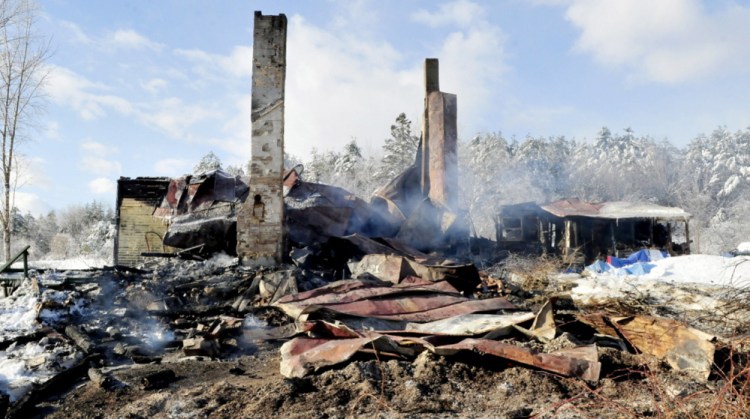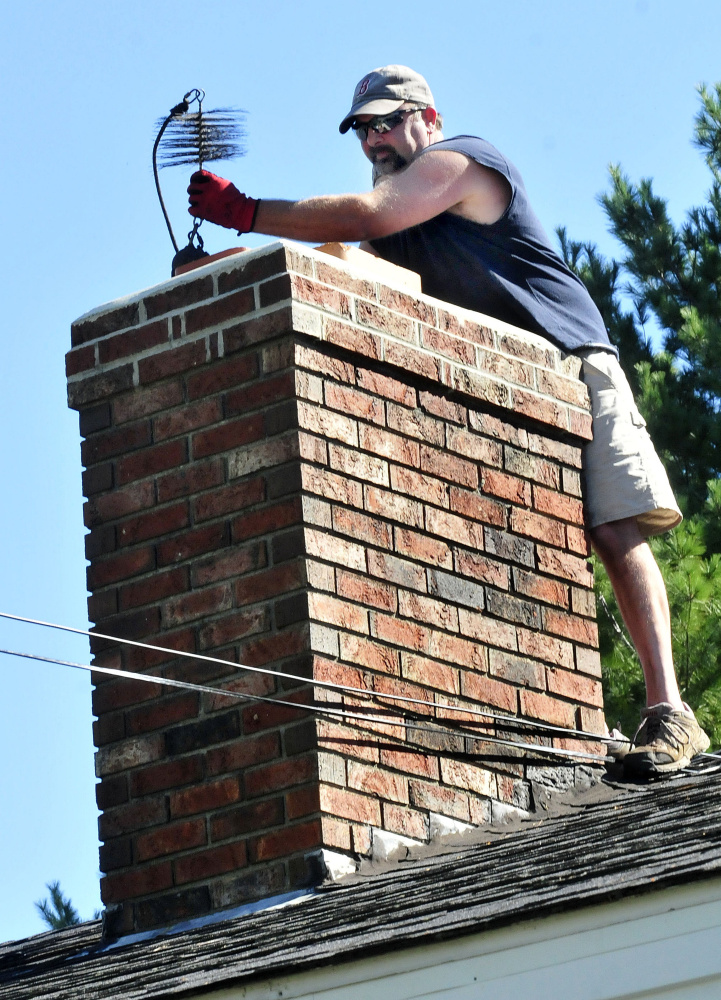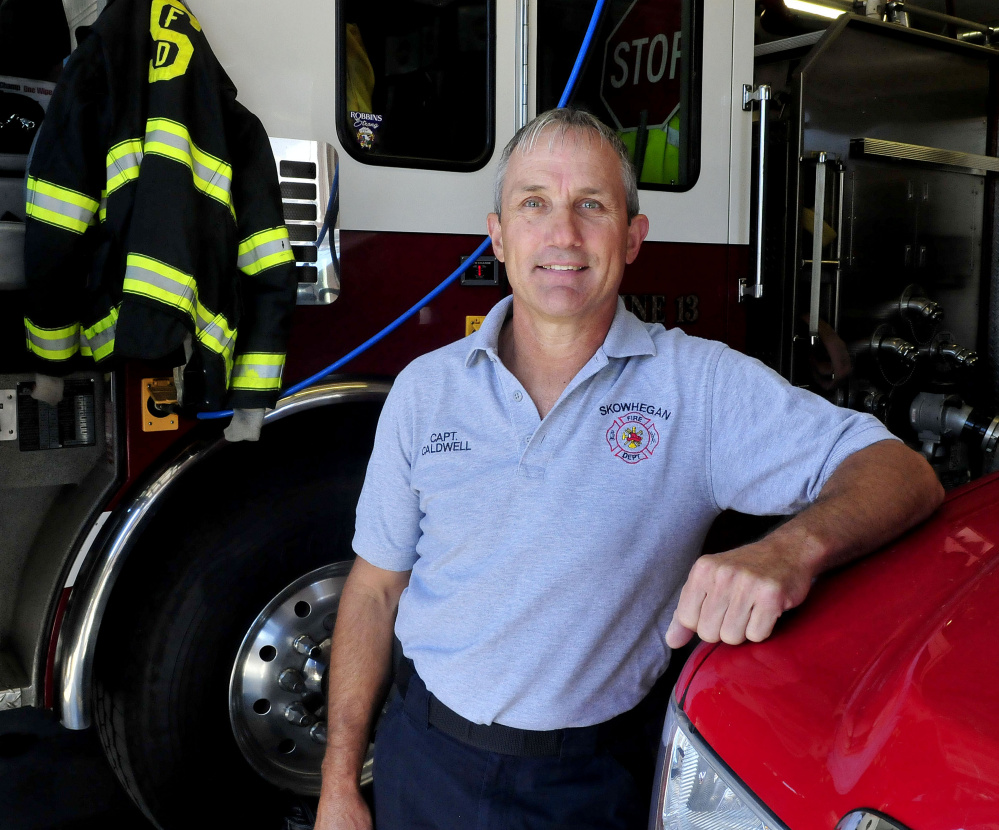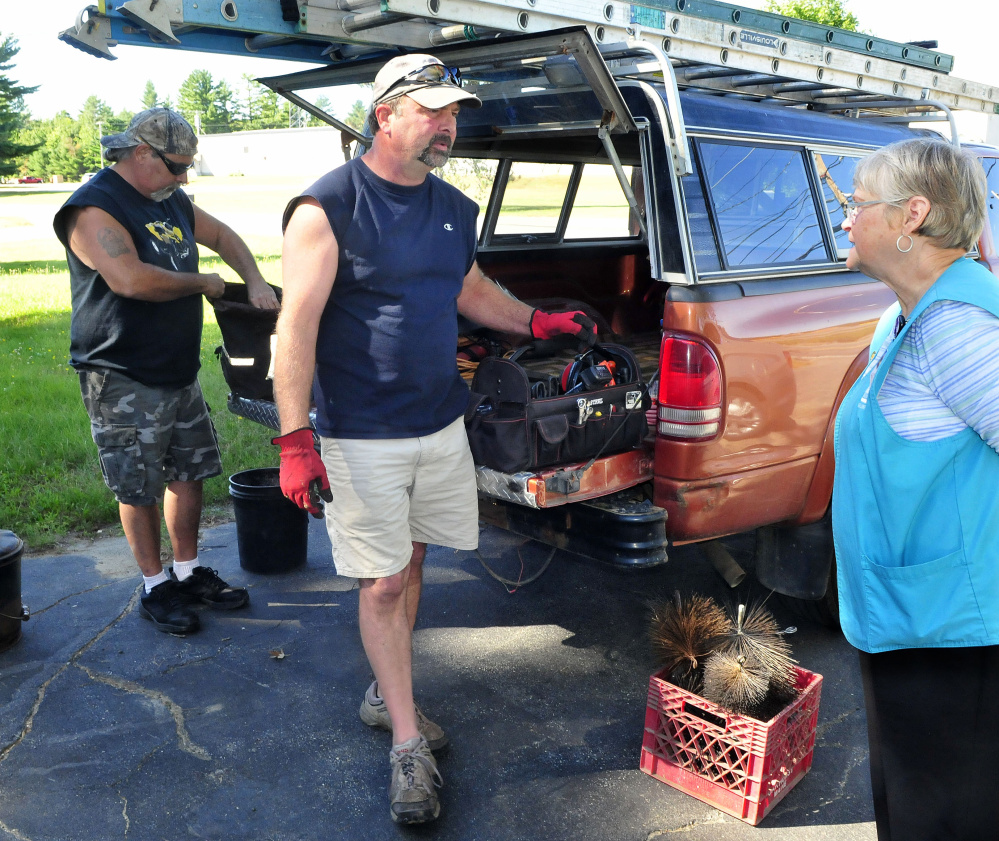Even if the Old Farmer’s Almanac predictions are correct and this coming winter will be “super cold with a slew of snow,” Judy Hilton, of Skowhegan, will be just fine.
Hilton, who is retired after 23 years in the business office at Redington-Fairview General Hospital, recently had her home’s chimneys swept and her fireplace and wood stove cleaned.
“John looks at it every year. I don’t want any chimney fires,” Hilton said. “Having a clean stove and a clean chimney provides a great sense of security.”
Hilton was referring to John Beane, of Moscow, who for the past 14 years has been a chimney sweep and maintenance man for wood stoves, pellet stoves, fireplaces, chimneys and all the stove pipes that connect them.
Beane’s primary job as a chimney sweep is looking for creosote, a gummy, foul smelling, corrosive and combustible substance that, if no precautions are taken, will coat the insides of stove pipes and chimneys and can lead to chimney fires.
Creosote is formed when volatile gases given off in the wood burning process combine and condense on their way out of the chimney. The creosote is removed from the top of the chimney with long flexible brushes that scrape the material down to the chimney cleanout, from which it is hauled away.
Beane, 46, explained the process recently from Hilton’s living room after he and his assistant, Darren Witham, of Bingham, had finished.
“While I’m up on the roof, I inspect the roof, the bricks – looking for loose shingles, deteriorated mortar, flashing, overhanging trees, but mostly we look at the chimney,” Beane said. “It’s safer for everyone – firefighters and home owners. Chimney fires can break and crack clay liners and burn through loose mortar joints into the attic and get into the house.”
Built-up creosote can resemble burned popcorn as it builds up in the chimney lines and stove pipes, he said. Creosote can get so bad it actually can block chimneys. As it builds up, it restricts the flow in the chimney and stove pipes. This slows the smoke on its way out, allowing more time for it to cool and for the creosote to condense and deposit itself, further restricting the flow.
The material can form if a stove isn’t allowed to burn hot enough to burn cleanly, Beane said. Unseasoned “green wood” can add to the smoky problem and increase creosote.
“Green wood or wet wood doesn’t burn hot enough, so it’s always more smoky; and the more smoke, you get more buildup of creosote,” he said.
According to the National Fire Protection Association, U.S. fire departments respond to roughly 70,000 home structure fires that involve home heating equipment each year.
Those fires caused more than 600 deaths last year, 1,600 civilian fire injuries and more than $1 billion in property damage. Nearly half of all home heating fires occur in December, January and February. Chimneys and chimney connectors need to be cleaned and inspected at least once a year.
Stove maintenance includes removing, cleaning and vacuuming all of the connecting pipes and surfaces. The thimble that connects the stove pipe to the chimney also must be removed, cleaned and inspected because of rust and decay, Beane said. Old pipes have to be replaced, too, he said.
Beane said it is also important to burn quality hardwood in a wood stove. He said “a mixed array” of seasoned hardwood is best, using beech, rock maple and yellow birch. To be properly seasoned, hardwood should be cut, split and stacked a minimum of four months to ensure a quality burn, he said.
Beane said in 2014 he cleaned and swept 98 wood stove chimneys and 72 chimneys for pellet stoves, which tend to burn hotter and more cleanly. He said this year he expects to have 100-plus wood stove customers before the snow flies, noting that his customers also have their eyes on winter predictions for a repeat of last year’s snow and cold.
Capt. Rick Caldwell, the Skowhegan Fire Department’s public education officer, said it is important for a homeowner whot burns wood in the winter to make sure all of the home’s heating equipment is properly maintained and cleaned every year.
He said fireplace screens are also important, and for wood stoves, maintaining the proper distance from walls and floors and other combustibles. He said a minimum of 3 feet around any heating device is advised.
“If a chimney get dirty and gets blocked, not only could the creosote catch fire and spread into the walls, it could get blocked and cause carbon monoxide to come into the house,” he said. “Everyone should have carbon monoxide detectors in their house.”
Caldwell said his department averages a dozen chimney fires every year. A third of those fires end up spreading into walls and other parts of the house.
“If it gets too hot, it can spread into the walls, crack the chimney and cause damage,” he said. “All of them could have been prevented by just checking the chimney with a mirror, seeing if that space is getting smaller; and if it is, just clean it out.”
Doug Harlow — 612-2367
Twitter:@Doug_Harlow
Send questions/comments to the editors.







Success. Please wait for the page to reload. If the page does not reload within 5 seconds, please refresh the page.
Enter your email and password to access comments.
Hi, to comment on stories you must . This profile is in addition to your subscription and website login.
Already have a commenting profile? .
Invalid username/password.
Please check your email to confirm and complete your registration.
Only subscribers are eligible to post comments. Please subscribe or login first for digital access. Here’s why.
Use the form below to reset your password. When you've submitted your account email, we will send an email with a reset code.